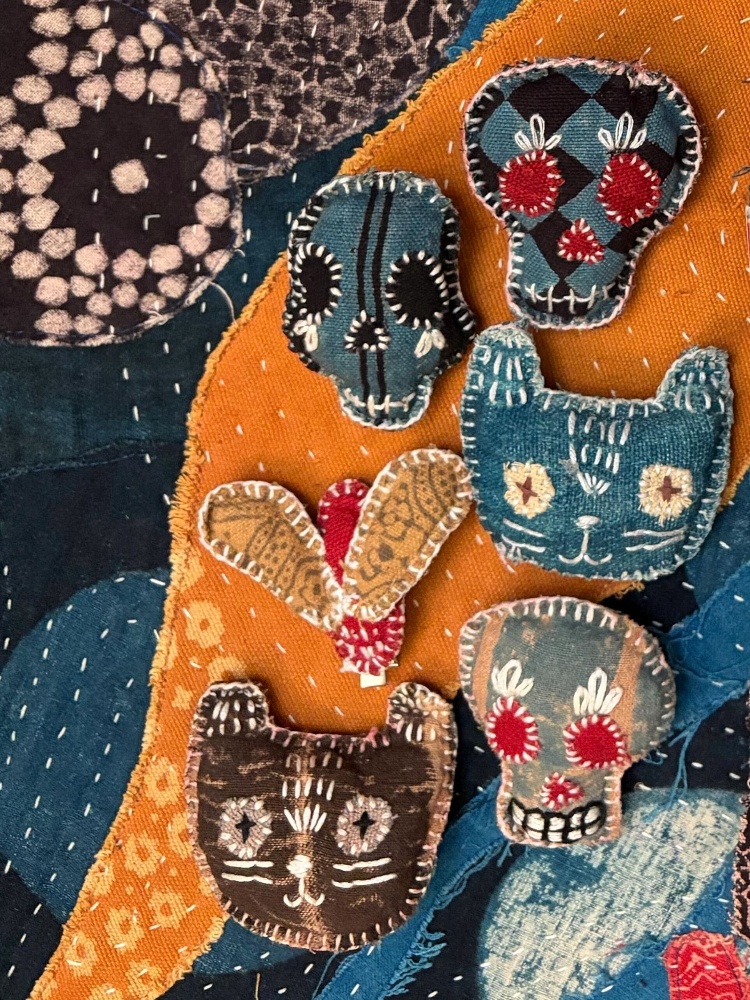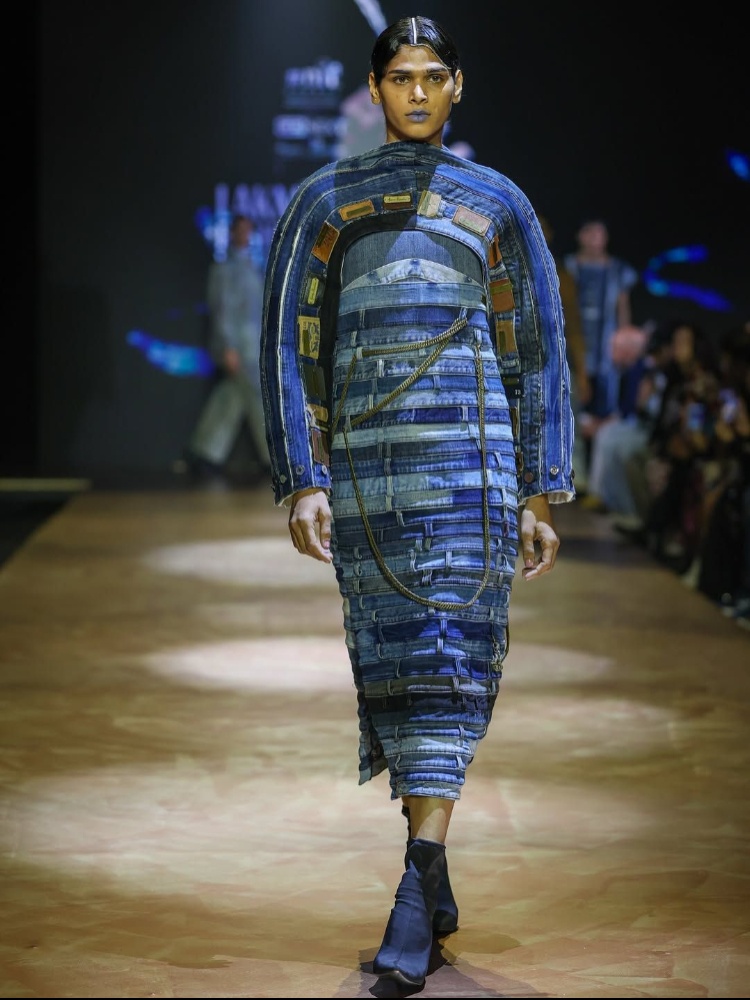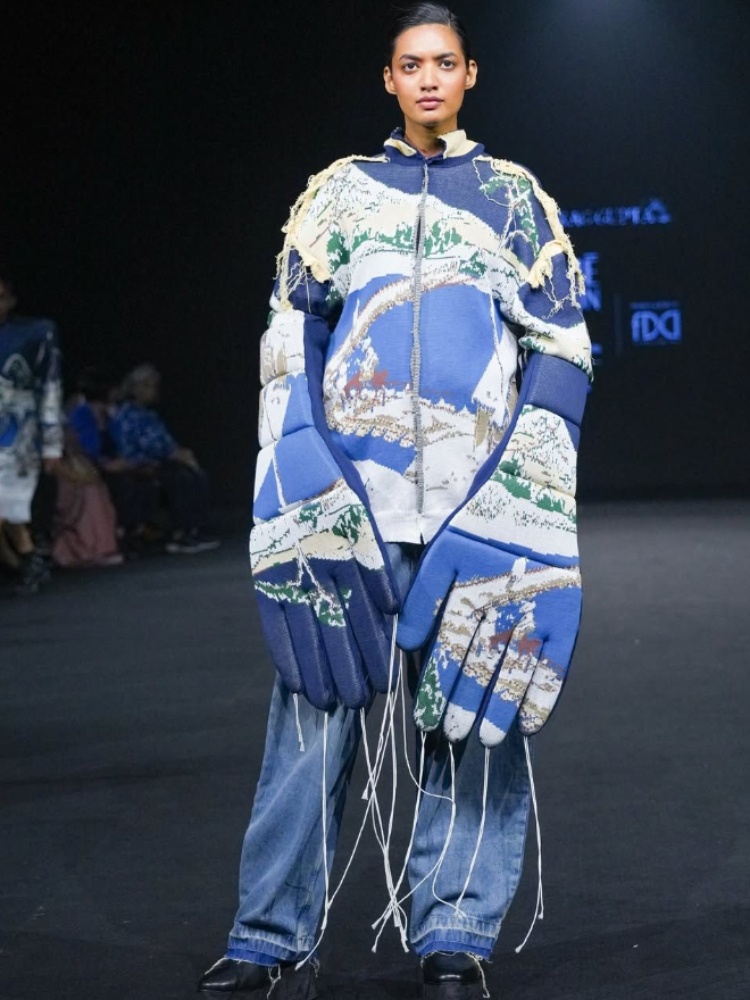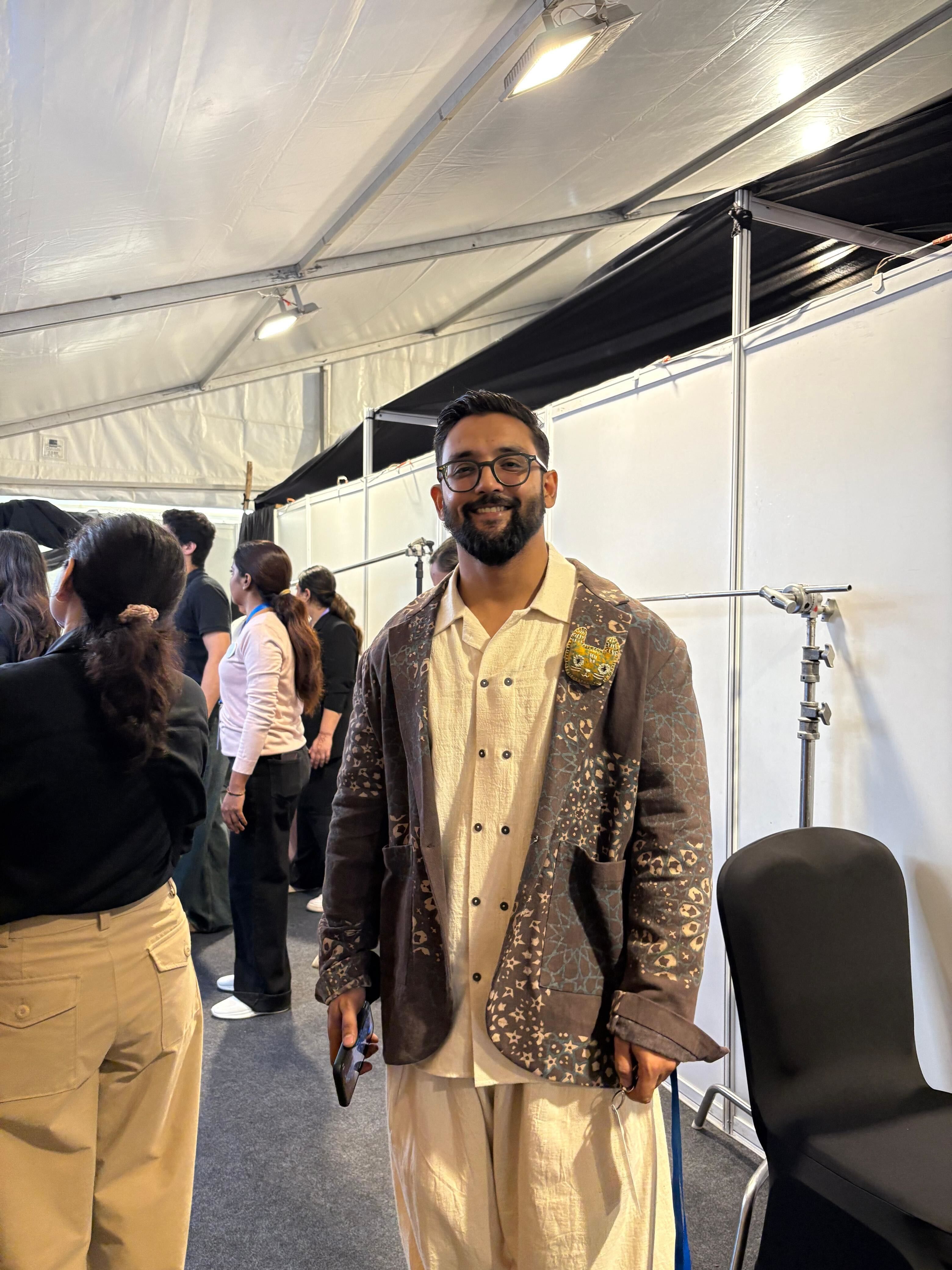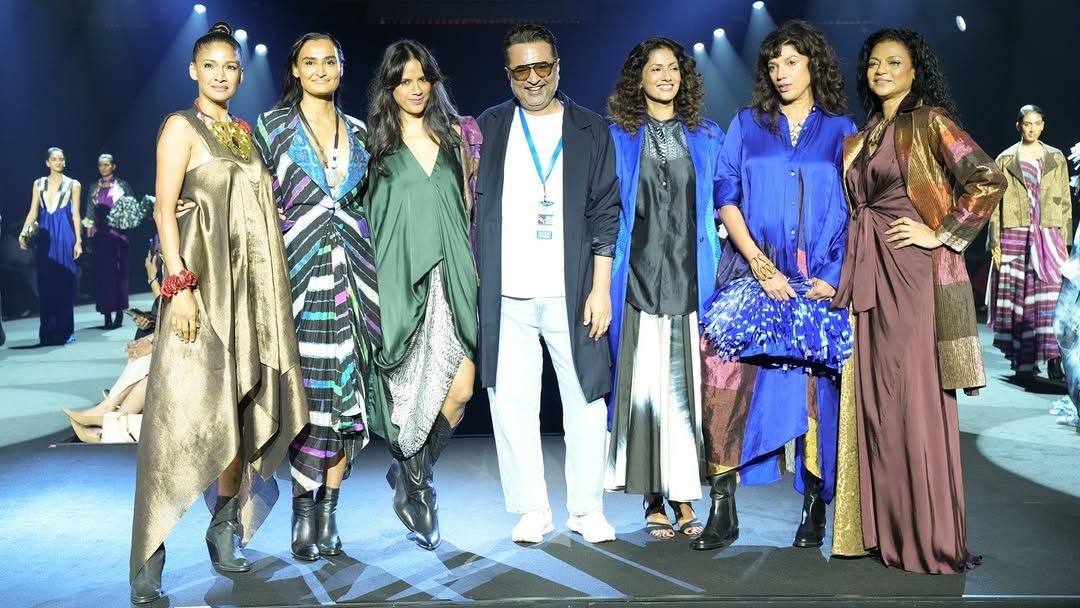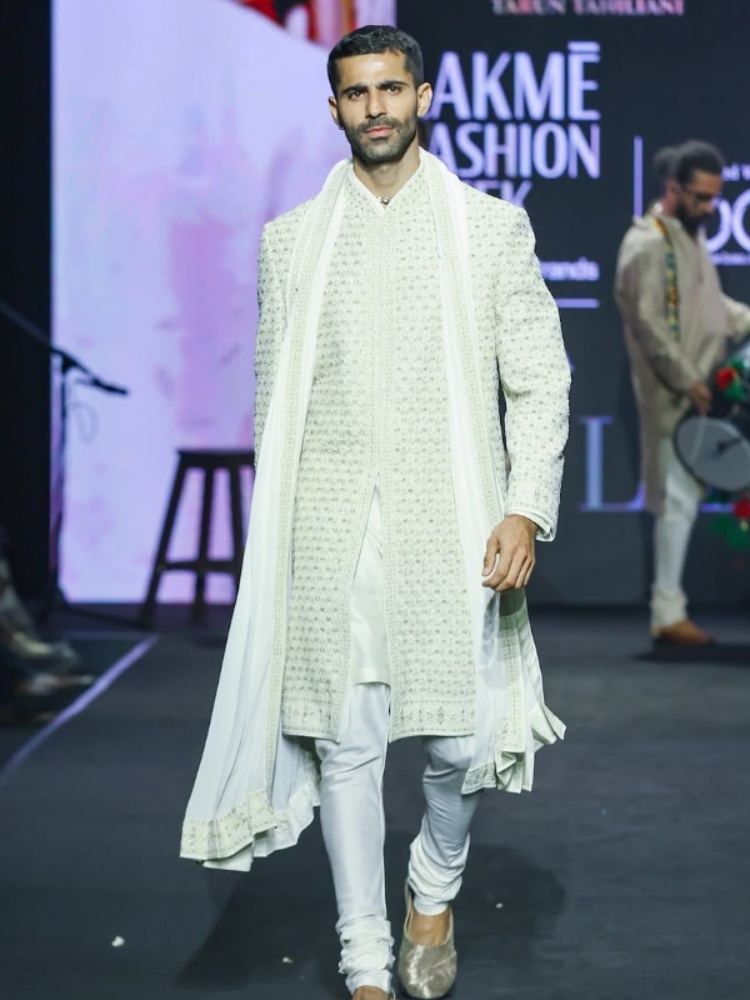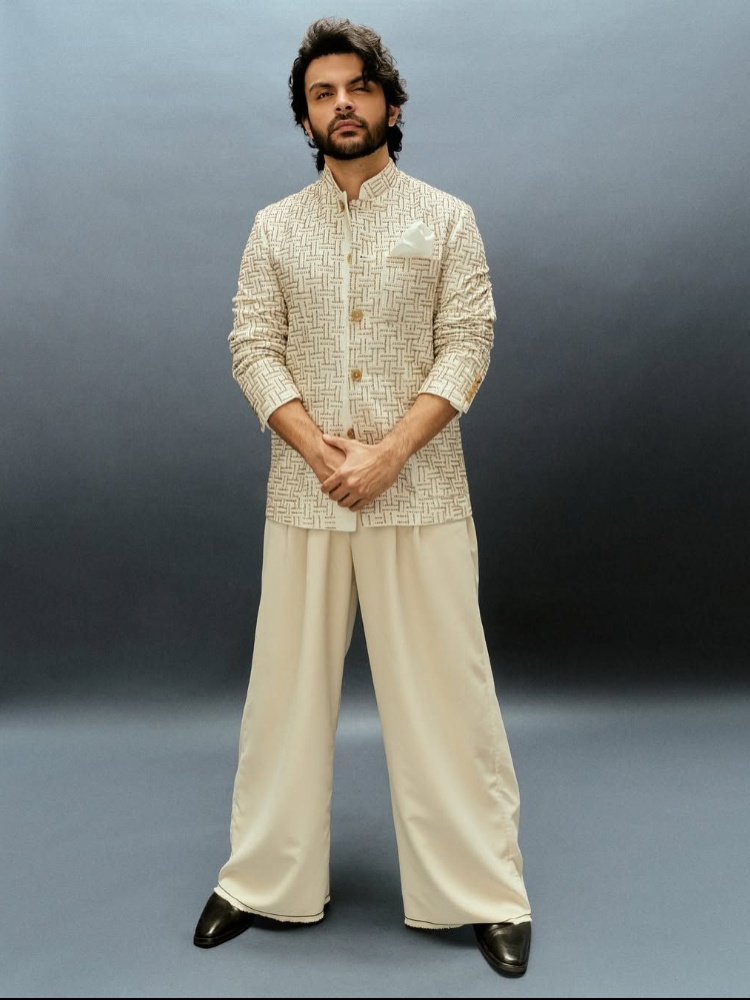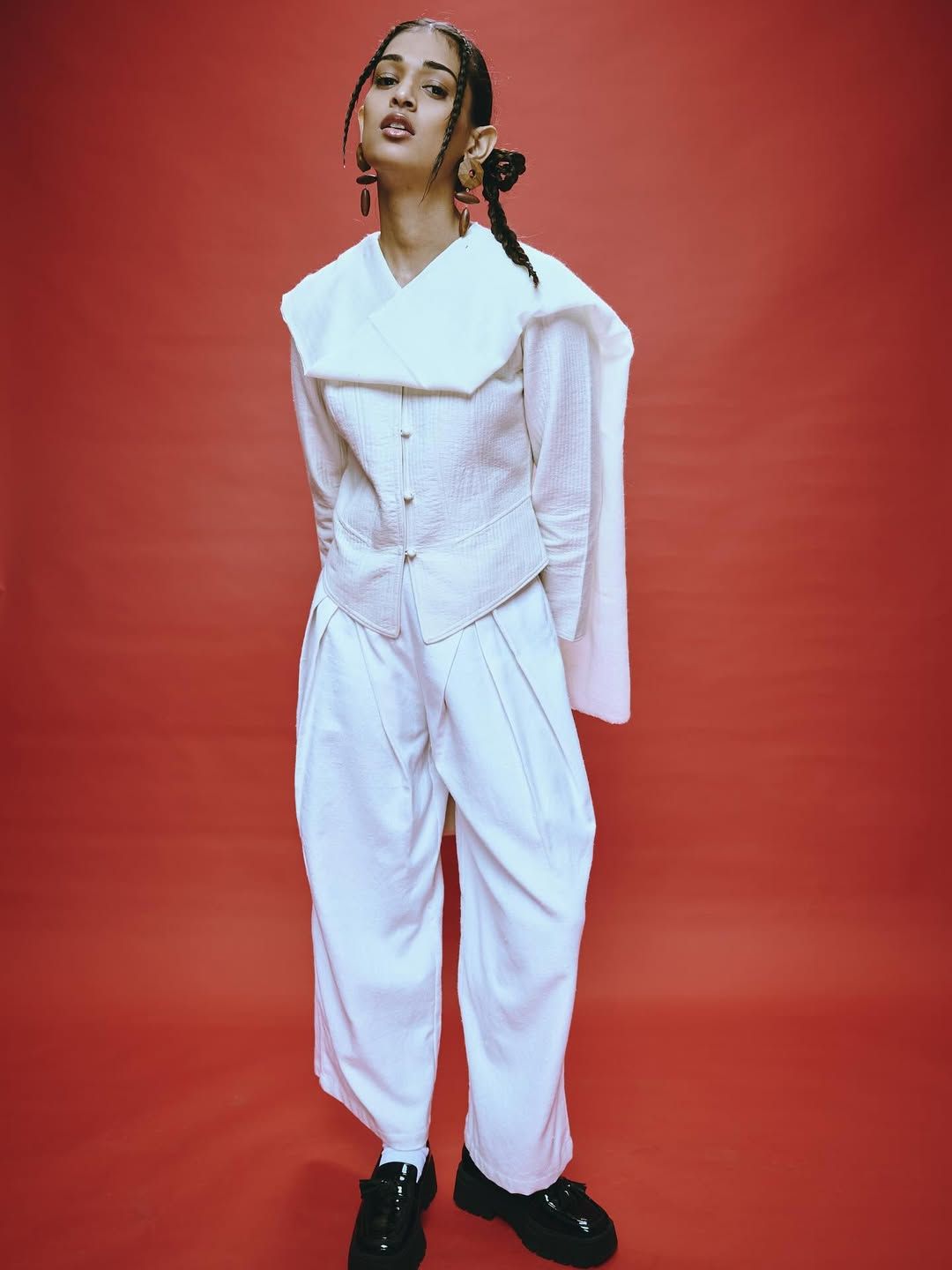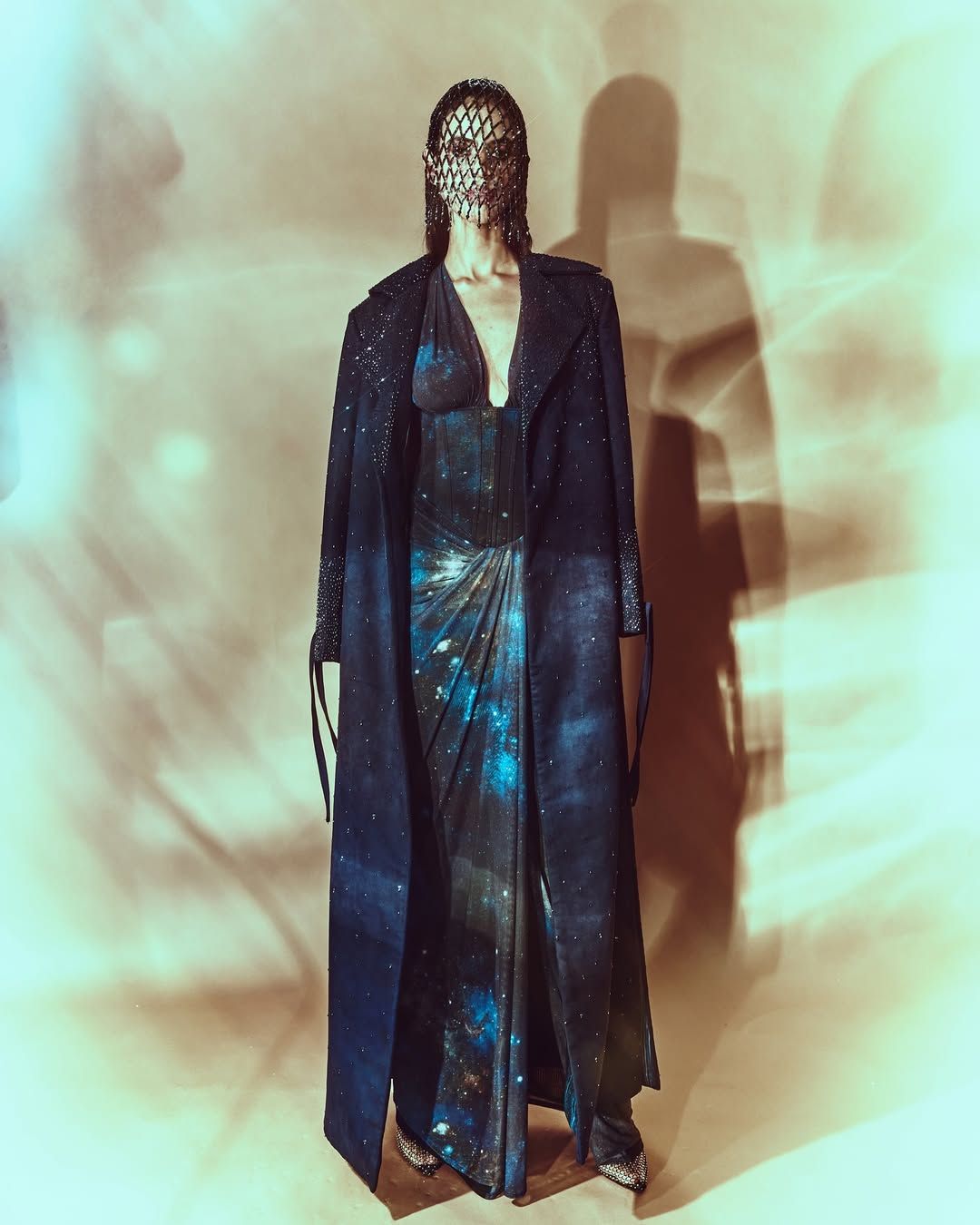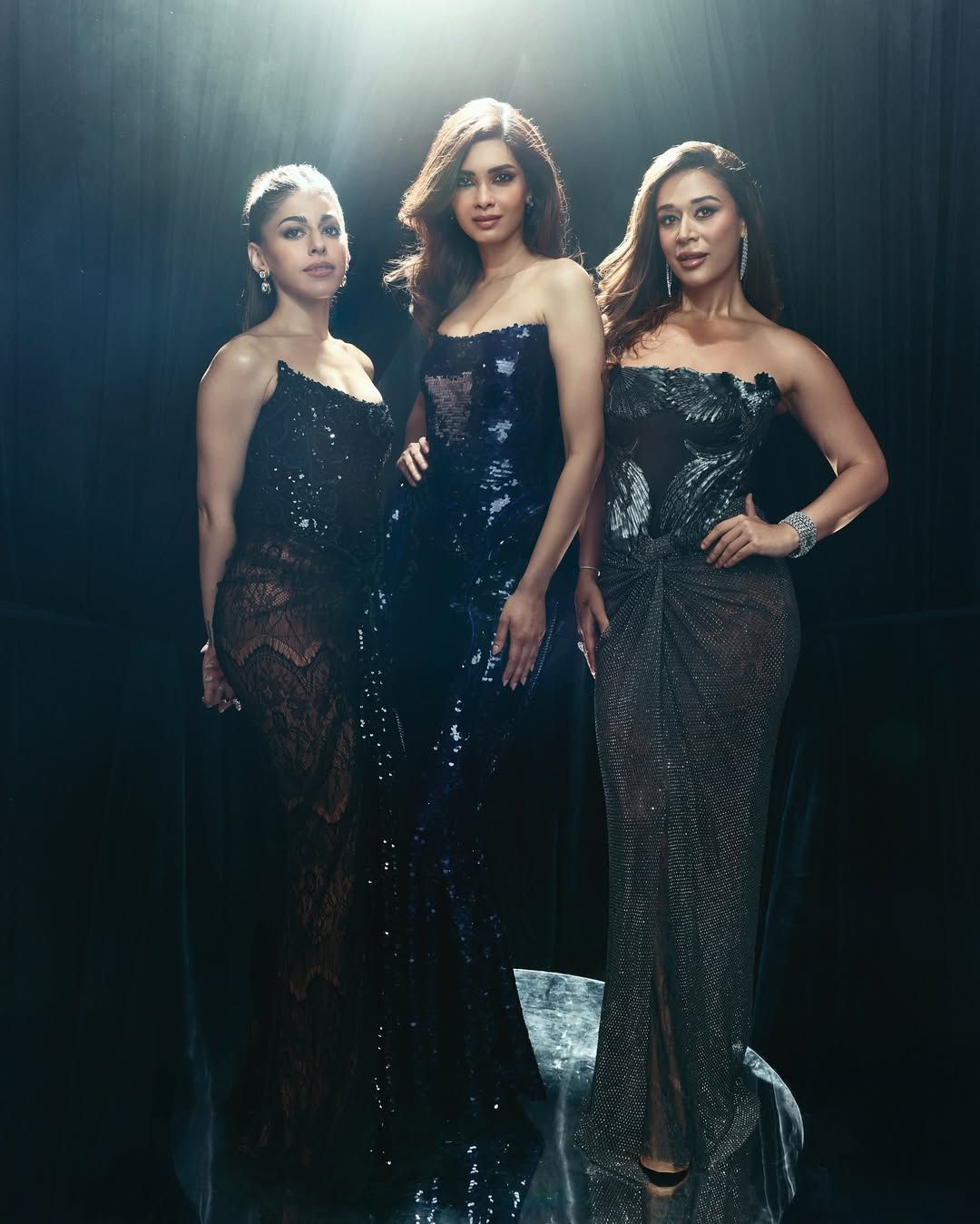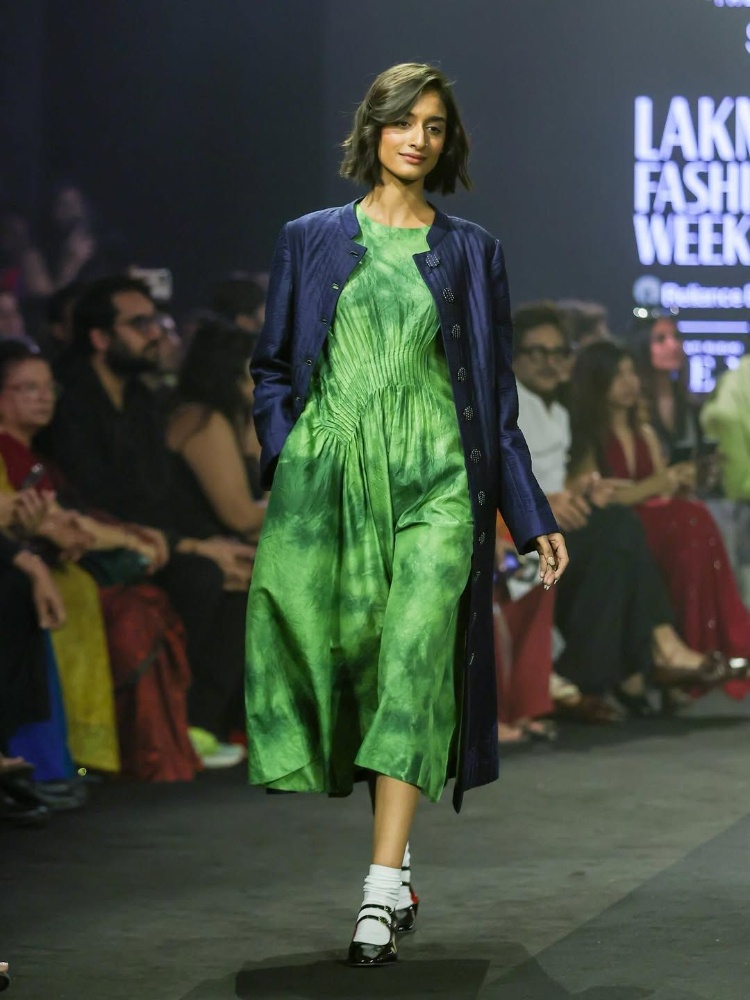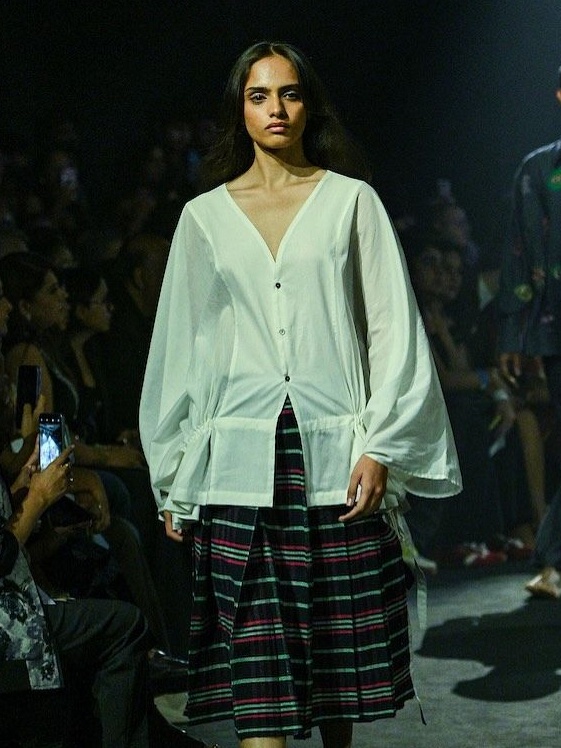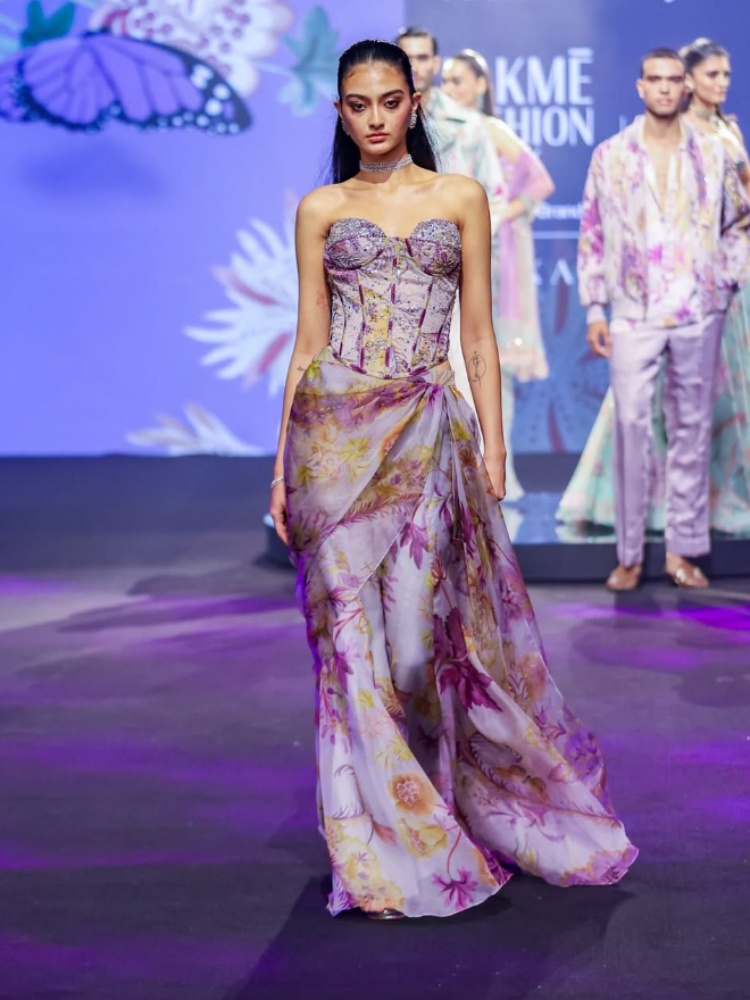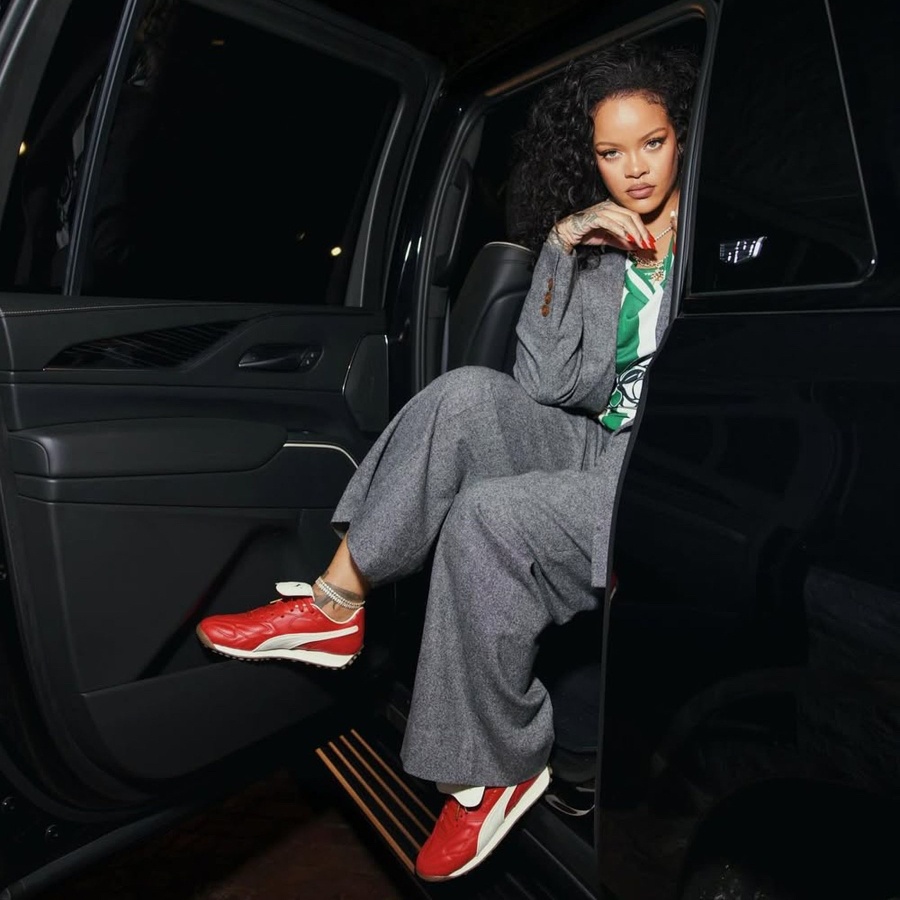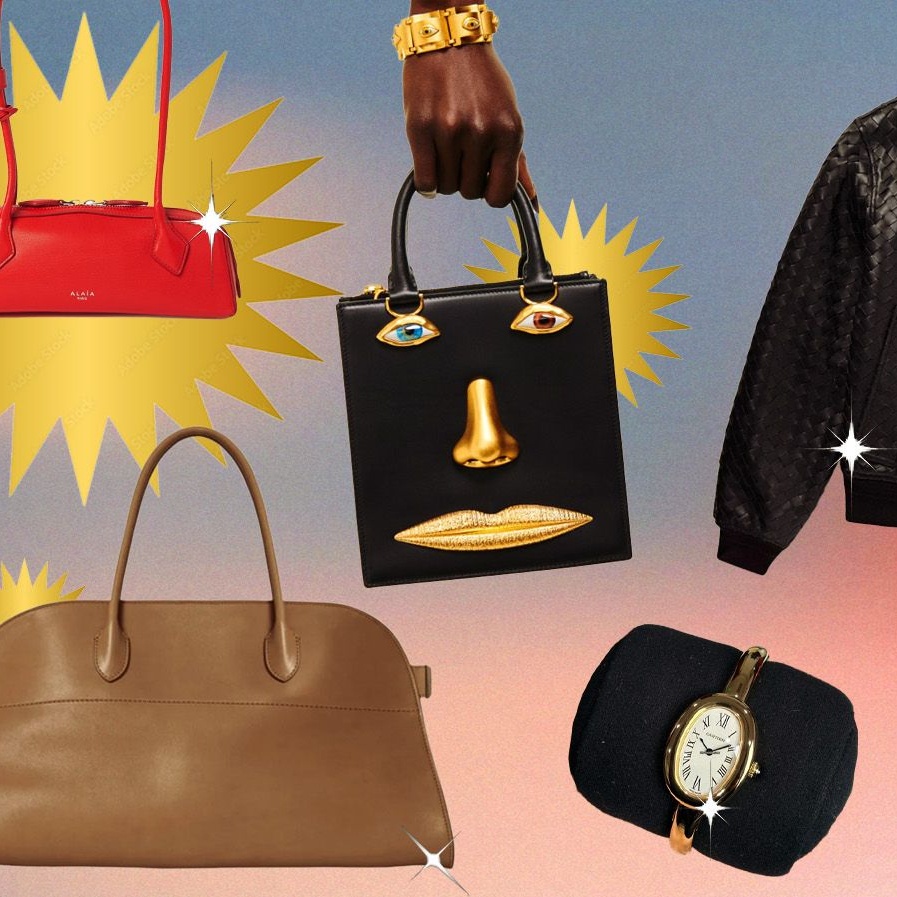Who is fashion week for? Is it still for brands to access buyers and retailers, as was traditionally the case? Is it for designers to push forward their design narrative? Or is it actually a marketing exercise, either for brands themselves or for their corporate sponsors selling everything from luxury cars and lingerie to fabric softener—a chance for the latter to find some kind of virality on social media through a crossover with fashion. At the end of what felt like a fairly quiet fashion season in Delhi and in a year that marked 25 years of Indian fashion weeks, it’s a question that deserves some thought.
One possible answer comes in the fact that, as it has been for a while, the most talked-about shows were not the big-ticket finales but rather the niche, more under-the-radar labels.
Whether it’s the Gen Next show that typically starts the season or simply a group show in the middle of the afternoon, there was still some creativity and excitement to be found. Mostly, from designers who aren’t already doing multiple shows a year or aren’t stretched over numerous sub-brands and collections, which allows them to bring a fresh perspective to what a fashion presentation can look and feel like.
Rather than being created simply for the runway, weddings or Instagram, their clothes are designed to be worn in the world, unfiltered, unmediated. That focus was clear in the shibori-dyed kaftans at Inca, the playful knitwear by Cavia or the ajrakh-print separates by 23°N 69°E, all shows that were received well. There was energy even in the choice of performances—a didgeridoo player at Aseem Kapoor, a dance troupe at Naushad Ali, the always joyful Boombay Djembe Folas at SWGT or a pair of witch-doctor dancers at TIL by Ankur Verma. It’s a reminder of another key role that India’s fashion weeks play: to encourage talent and provide a platform on which they can offer a fresh set of cultural ideals. For the new guard, fashion is a way to engage with people across the supply chain, it’s an outlet for creative collaboration, and it engages with craft lightly, easily, as clothes you can take with you everyday.
Ahead, some of the highlights of the season.
Denim has never been weirder: Anam Husain and Anurag Gupta
If denim has been done to death, Gen Next designer Anam Husain and Anurag Gupta proved there’s scope for more. Husain reimagined upcycled denim through the lens of katputhlis—creating sculpted dresses and skirts structured with boning and metal wire to mimic marionette rigidity. In some pieces, zardozi detailing shimmered through the fabric’s roughness. “I wanted to go more conceptual,” she said. And it showed. The result felt like an ode to craft and control. Meanwhile, Anurag Gupta’s latest took cues from Hokusai’s waves and used Indiwool—a wool denim dyed in indigo using plasma-dye technology, developed by IndigoTex with IIT-Delhi. Gupta sculpted the new fabric into experimental silhouettes that were unmistakably his—boxy yet fluid, and of course, with his oversized gloves.
